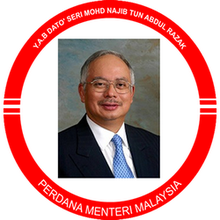Pikat profesional bekerja di negara sendiri
DUBAI 22 Julai - Datuk Seri Najib Tun Razak berkata, kerajaan perlu mewujudkan satu daya tarikan dalam suasana kerja di Malaysia agar golongan profesional memilih untuk berkhidmat di negara sendiri dan bukannya di seberang laut.Perdana Menteri berkata, satu daripada sebab kenapa golongan profesional Malaysia kurang berminat bekerja di negara sendiri ialah pendapatan yang agak rendah di Malaysia berbanding dengan di luar negara."Ianya bukan kerana tidak adanya 'Semangat Malaysia', tetapi semata-mata kerana kita kurang kompetitif daripada segi gaji yang kita tawarkan kepada golongan profesional."Ini adalah satu daripada tumpuan yang akan diberikan dalam model ekonomi baru kita," katanya pada satu sesi dialog di sini pada Isnin dengan sekumpulan profesional dari Malaysia dan wakil syarikat-syarikat Malaysia yang bekerja di Abu Dhabi dan Dubai.Najib berkata, usaha menjadikan Malaysia sebuah negara berasaskan ilmu dan berinovasi akan terjejas tanpa cerdik pandai daripada kalangan rakyat sendiri.Beliau berkata, langkah yang akan diambil oleh kerajaan perlu menarik minat bukan saja rakyat Malaysia yang berbakat tetapi juga golongan profesional luar negara."Terdapat aliran negatif, iaitu lebih ramai rakyat Malaysia lebih gemar bekerja di luar negara jika mereka diberi peluang. Kita perlu kurangkannya supaya kecenderungan ini menjurus kepada memikat mereka untuk bekerja di Malaysia," kata Perdana Menteri.Beliau berkata, walau apapun keadaannya, akan ada rakyat Malaysia yang memilih bekerja di luar negara tetapi yang penting ialah mewujudkan suasana bekerja di Malaysia supaya menjadi menarik.Najib juga memberikan satu nasihat kepada mereka yang hadir pada dialog itu, dengan meminta mereka supaya sentiasa menonjolkan perkara yang baik mengenai Malaysia."Anda boleh kata apa saja mengenai kerajaan tetapi tonjolkan yang baik mengenai Malaysia," katanya.Najib yang disertai isterinya, Datin Seri Rosmah Mansor, singgah di Abu Dhabi dalam perjalanan pulang daripada lawatan ke Mesir dan Arab Saudi. - BERNAMA
GLC Transformation Program
The GLC Transformation Program was first launched in May 2004 and is part of an ongoing effort by the Government to drive development and grow the economy. The launch saw the introduction of the K.P.I. (Key Performance Indicators), board composition initiatives, the revamp of Khazanah Nasional Bhd, as well as changes in the management of a number of GLC’s. Three key principles run through the GLC transformation program:
program is part of the larger national development strategies;
program is focused on enhancing performance at the GLC’s; and
program takes full cognisance of matters relating to governance, shareholder value and stakeholder management. The Establishment of PCG To sustain the momentum created by the launch of initial measures, the Putrajaya Committee on GLC High Performance (PCG) was formed in January 2005 to follow through and catalyse the GLC Transformation Program. PCG is chaired by the Second Finance Minister, with participation from the heads of the Government-Linked Investment Companies (G.L.I.C.’s) namely Khazanah Nasional Bhd (KNB), Permodalan Nasional Bhd (PNB), Employees Provident Fund (EPF), Lembaga Tabung Amanah Tentera (LTAT) and Lembaga Urusan Tabung Haji (LTH) and representatives from the Ministry of Finance Inc. (MOF) and the Prime Minister’s Office to work together to monitor developments and to recommend further measures of improvements. GLC Transformation Manual The work of the PCG has culminated in a 'Transformation Manual' which was launched on 29th July 2005. The manual has two parts, the overall policy guidelines of the PCG to address some of the core challenges and guidelines, and it details of the GLC Transformation initiatives for 2005 and 2006. The manual is the result of robust and well-researched work, with more than 100 in-depth interviews conducted with GLIC CEO’s, GLC Chairman, CEO’s and Board members, institutional investors and opinion leaders, as well as extensive analysis based on Malaysia’s own programs and similar ‘best practice’ experiences from other countries. The policy guidelines in the manual have been set out to achieve 5 objectives:
to clarify the GLC mandate in the context of national development;
to upgrade the effectiveness of Boards and reinforce corporate governance of GLC’s;
to enhance GLIC’s capabilities as professional shareholders;
to adopt corporate best practices within GLC’s; and
to implement and enforce the GLC Transformation Program. In addition to the policy guidelines,10 initiatives have been identified for development, launched and implemented across all GLC’s for the rest of 2005 and 2006. These initiatives have been set out based on their importance as levers for change, their large potential impact on value, and the unique ability of the Putrajaya Committee to drive change in these areas. The 10 initiatives are:
enhance Board effectiveness;
strengthen directors capabilities;
enhance G.L.I.C. monitoring and management functions;
improve regulatory environment;
clarify social obligations;
review and revamp procurement;
optimise capital management practices;
manage and develop leaders and other human capital;
intensify performance management practices; and
enhance operational improvement.
The 10 Initiatives for 2005 and 2006 should be rolled-out over the next 17 months. The Initiatives are work in progress. The manual highlights the various stages of these initiatives. Each initiative includes the following:
Terms of Reference: A description of the Initiative outlining “what” to expect;
Guiding Principles: A set of detailed guidelines to assist GLCs in their effort to implement the initiatives derived from the Policy Guidelines. All GLCs are encouraged to adopt and adhere these guidelines.
Supporting Material for Guiding Principles: Where relevant, this will elaborate on the guiding principles by providing examples, templates and other information; The Transformation Manual will be augmented with further guidelines and supporting materials, such as 'How-to Books', templates, tools and best practice case studies, to make implementation that much easier. In certain instances, pilot projects for the 2005 and 2006 initiatives have been implemented at selected GLIC’s and GLC’s to create the momentum for change and to access/gauge execution challenges.
The PCG is charied by YB Minister of Finance II and reports to YAB
Prime Minister. Membership of the PCG consists of heads of Permodalan
Nasional Berhad (PNB), Employee Provident Fund (EPF), Khazanah Nasional
Berhad (KNB), Lembaga Tabung Angkatan Tentera (LTAT) and Lembaga Tabung
Haji (LTH), and representatives from the Ministry of Finance Inc. (MKD)
and the Prime Minister's Office.
Khazanah also acts as the Secretariat to PCG, chairs and drives the PCG
Joint Working Team (JWT) which consists of representation from all GLICs.
Lead consultants to the PCG was McKinsey & Company, while other consultants,
notably the Boston Consulting Group and Ethos Consulting, contributed to
specific initiatives in the program.
1. What is the GLC Transformation Program?
A: GLC Transformation is the program that improves performance of Government-linked companies. The Government's efforts at improving performance in companies under its control or stewardship will have a positive demonstrative effect on the rest of the corporate sector. Undertaking such a program should result in a sustainable lift to the current trajectory of GLC performance, improving Malaysia's ability to achieve Vision 2020. (Definition of Vision 2020 - By the year 2020, Malaysia must be a comprehensively developed country - developed economically, developed politically, developed socially and culturally, progressive and caring.)
2. Why is the GLC Transformation Program so critical to the development of Malaysia? A: GLCs and their controlling shareholders, GLICs, constitute a significant part of the economic structure of the nation. GLCs employ an estimated 5% of the national workforce and account for approximately 36% and 54% respectively of the market capitalisation of Bursa Malaysia and the benchmark Kuala Lumpur Composite Index. Even with active divestment and privatisation, GLCs remain the main service providers to the nation in key strategic utilities and services including electricity, telecommunications, postal services, airlines, airports, public transport, water and sewerage, banking and financial services. In areas of industrial policy and development such as in automotive and semi-conductors, GLCs play an important role in executing Government policies and initiatives and in building capabilities and knowledge in key sectors. Further, in the areas of building international economic linkages through investments in foreign ventures and investments in new growth sectors, GLCs and GLICs are increasingly playing a more active and significant role in line with a gradual internationalisation of Malaysian economic interests, in tune with increased global economic liberalisation.
3. What is the difference between this year's GLC Transformation (GLCT) Program and the one launched in May 2004?
A: The GLC Transformation Program is targeted at a deep and sustained structural improvement in GLC organisational and performance practices where benefits are targeted to be reaped over the short and medium, but ultimately focused on sustainable longer-term benefit over the next 5 to 10 years. With PCG being established in January of this year, we are now in the next phase of a continuing journey.
4. What are the key principles for GLC Transformation?
There are 3 key principles to the GLC Transformation including:
National development foundation - the GLC Transformation Program is a subset of the broader national development strategies that include the principles of growth with equity, improving total factor productivity, the development of human capital, and the development of the Bumiputera community.
Performance focus - the underlying rationale of the GLC Transformation Program is to create economic and shareholder value through improved performance at GLCs. Hence, specific policy guidelines and initiatives will be driven by principles of performance and meritocracy within the broader national development focus described above.
Governance, shareholder value and stakeholder management - the GLC Transformation Program, while being led by the Government, fully observes the rights and governance of shareholders and other stakeholders. Hence, the policy measures to be implemented come in the form of policy guidelines rather than rules that GLCs are expected to implement through their Board of Directors in line with good governance. In addition, and within the context prescribed above, GLCs are expected to engage in managing other valid stakeholder interests, in particular those of employees, customers, suppliers and the Government itself as regulators and policy makers.
5. How does the GLC Transformation Program affect each stakeholder?
A: Based on one methodology to estimate the potential for value creation, it is estimated that high performing GLCs, could in the next 5-7 years, contribute a potential upside of RM250 to 300 billion in market capitalisation. Further, as an illustration, enhancements in procurement practices and systems alone is estimated to result in annual bottom-line impact of over RM11billion for the G-15. Beyond the economic and financial benefits to shareholders, GLCs will benefit all stakeholders and contribute to Malaysia's future wellbeing in other important ways. For example:
Higher service and quality levels for customers;
Better job prospects in more dynamic GLCs;
Increased transparency favouring higher value-for-money suppliers, with reduced levels of leakages and inefficiencies;
Continued development of the Bumiputera community - with better skilled and more competitive Bumiputeras
6. What is the Transformation Manual?
A: The Transformation Manual is the output of this endeavour and is intended to be a living document - with new Policy Guidelines and Initiatives to be added over time, and updates or amendments to be made to existing Guidelines and Initiatives as necessary. The Policy Guidelines were launched on 29th July, 2005, and amendments and updates shall periodically be made available online. This Transformation Manual consists of four sections; inclusive of an Introduction in Section I. Section II comprises the Policy Guidelines of the PCG, which are divided into individual chapters applicable to different audiences, namely GLICs, GLC Boards, and GLC management. The final chapter in this second section lays out PCG's recommended approach to implementing the GLC Transformation Program. Section III comprises the 2005/6 GLC Transformation Initiatives. The initial Initiatives are introduced in this section. Over time, this section will be augmented with further Guidelines and supporting materials, such as templates, tools, and best practice case studies. The primary audience of this section is the CEO and senior management of GLCs, with several Initiatives for GLICs and GLC Boards. Section IV is an Appendix.
7. Who should read the Transformation Manual? A: The manual is a public document which is available for everyone to read. However, the are certain sections that are tailored for specific audience. For instance, the 'Policy Guidelines' section is intended to Government, GLC Boards, GLICs and GLCs. For '2005/6 GLC Transformation Initiatives' section: the CEO and senior management of GLCs. Some Initiatives are also targeted at GLICs and GLC Boards.
8. What are the 10 themes of initiatives?
Enhance Board Effectiveness
Strengthen Directors Capabilities
Enhance GLIC Monitoring and Management Functions
Improve the Regulatory Environment
Clarify Social Obligations
Review and Revamp Procurement
Optimise Capital Management Practices
Manage and Develop Leaders and Other Human Capital
Intensify Performance Management Practices
Enhance Operational Improvement
9. How were these 10 themes of initiatives developed?
A: The PCG through the JWT conducted a significant amount of research and analysis into the causes and issues surrounding GLC performance. Various research methodologies were employed including more than one hundred interviews, review of relevant best practices, regional and international benchmarking, and a review of existing policies and legal frameworks governing GLCs.
10. Who should be accountable in implementing the initiatives?
A: Ultimately, GLC Boards and GLICs bear the responsibility of overseeing the transformation of GLCs.
11. When will the Initiatives be implemented?
A: The GLICs and GLCs need to implement them as soon as possible when introduced.
12. Whom should I contact when having questions regarding these initiatives?
A: Contact pcg@treasury.gov.my if you have any specific questions regarding the initiatives.
13. What is the TMO?
A: Transformation Management Office is a unit that was set up to
Develop, evaluate and prioritise new initiatives in line with themes and objectives
Launch the initiatives identified, including identifying pilots, assembling the relevant working team, monitoring progress, managing interdependencies across initiatives and de-bottlenecking any execution issues, whenever required
Ensure codification and dissemination of learnings/best practices from pilots and initiatives across GLCs and GLICs. For example, via the creation and dissemination of "Books" with guidelines, workshops led by pilot candidates, facilitating the creation of 'Centers of Excellence' at GLICs and/or GLCs. The TMO will report on its progress to the PCG every quarter.
14. How long will this program last?
A: GLC Transformation is a long journey, like any other change management effort. Phase 1 started in May 2004 with the introduction of 2004 Measures aimed at inculcating high-performance culture at GLCs. This is followed by the design of the Transformation Manual which culminated in the manual's launch on 29th July 2005 by YAB Prime Minister. Phase 2 is designed to generate momentum for continuous improvement efforts at both the GLICs and GLCs levels through implementation of initiatives between July 2005 and December 2006. It is envisioned that tangible results will be realized in Phase 3 within 2 to 5 years beyond December 2006 across all GLCs with greater operational and financial performance. Phase 4 marks the full national benefit from 5 to 10 years onwards as a result of GLC Transformation implementation, with the hopes of producing several regional champions among the GLCs, able to compete competitively with their competitors in the global arena. -->Definition Questions-->
15. Who are the GLCs? What is the definition of GLCs? A: Government-Linked Companies (GLCs) are defined as companies that have a primary commercial objective and in which the Malaysian Government has a direct controlling stake. Controlling stake refers to the Government's ability (not just percentage ownership) to appoint Board members, senior management, and/or make major decisions (e.g. contract awards, strategy, restructuring and financing, acquisitions and divestments etc.) for GLCs, either directly or through GLICs. Includes GLCs, where the Government of Malaysia controls directly through Khazanah, MoF Inc, KWAP, and BNM; or where GLICs and/or other federal government linked agencies collectively have a controlling stake. Includes companies where GLCs themselves have a controlling stake, i.e. subsidiaries and affiliates of GLCs.
16. Who are the GLICs?
A: Government-Linked Investment Companies (GLICs) are defined as Federal Government linked investment companies that allocate some or all of their funds to GLC investments. Defined by the influence of the Federal Government in: appointing/approving Board members and senior management, and having these individuals report directly to the Government, as well as in providing funds for operations and/or guaranteeing capital (and some income) placed by unit holders. This definition currently includes seven GLICs: Employees Provident Fund (EPF), Khazanah Nasional Bhd (Khazanah), Kumpulan Wang Amanah Pencen (KWAP), Lembaga Tabung Angkatan Tentera (LTAT), Lembaga Tabung Haji (LTH), Menteri Kewangan Diperbadankan (MKD), Permodalan Nasional Bhd (PNB). 17. What is the definition of Economic Profit? A: In a nutshell, Economic Profit (EP) measures net profit after deducting a charge to account for the cost of capital utilized to generate this profit. Technically, EP is defined as capital invested multiplied by the spread between the return on invested capital (ROIC) and the weighted average cost of capital (WACC). Sometimes, EP is referred to as Economic Value Added (EVA). The formula is: Economic Profit = Invested Capital x (ROIC - WACC) Alternatively; Economic Profit = NOPLAT - (Invested Capital x WACC) where NOPLAT is Net Operating Profit Less Adjusted Taxes You may find further explanation and details on EP by reading standard Corporate Finance textbooks. As an example, textbooks written by these authors are a good place to start:
R. A Brealey, S. C. Myers, Principles of Corporate Finance, 6th Edition, Irwin McGraw-Hill, BurrRidge, IL, 2000.
T. Koller, M. Goedhart, D. Wessels, Valuation : Measuring and Managing the Value of Companies, 4th Edition, John Wiley & Sons, Hoboken, NJ, 2005
Subscribe to:
Post Comments (Atom)































































No comments:
Post a Comment